Alchemy as a Framework For Creative Expression
And how to use it to transform your own prima materia
At the heart of alchemy is transformation, both of the inner and outer world. Alchemists are often referred to as being the first chemists, their main focus being the transmutation of lead into gold. They believed that all matter was composed of a single ‘prima materia’ or first matter, which could be transformed from one form or state to another by undergoing a series of chemical operations. Everything in alchemy is symbolic, often holding a bouquet of meanings. This is immediately reflected in the interpretation of the external transmutation of the prima materia as a metaphor for internal spiritual transformation of the alchemist. In alchemy, everything is a mirror, and as the alchemist strives to purify the prima materia, they are simultaneously in the process of purifying their own soul.
“For the alchemists, this transformative process was enacted in the secrecy of the laboratory, in the heating and cooling of matter, the mixing and separating of elements. But for depth psychologists, the same process unfolds in the inner world of the psyche, in the play of images and emotions, dreams and fantasies. The counseling chamber becomes the alchemical vessel, the “vas hermeticum,” in which the client’s psychic raw materials are slowly transmuted into gold – the precious substance of the individuated Self.” - Joel Blackstock of Taproot Therapy
Dr. Carl G. Jung defined individuation as the process of self realization, the discovery and experience of meaning and purpose in life; the means by which one finds oneself and becomes who one really is.
When Jung studied alchemy, he found a strong correlation between the alchemical processes and the natural occurrences within the psyche, leading him to believe the four major stages of alchemy to be a metaphor for the individuation of the Self, a map of the inner journey towards wholeness and self-realization.
The Magnum Opus, or the great work, is often described as a four stage process, and as the foundation of any alchemical pursuit.
The three phases of the magnum opus: nigredo, albedo and rubedo. (from Pretiosissimum Donum Dei, published by Georges Aurach in 1475)
The first stage of the alchemical process is Nigredo, or blackening. This is where the prima materia experiences decay, decomposition and death. For the psyche, this is what's commonly referred to as the dark night of the soul. Alchemy tells us that death is necessary for new life to spring forth, and Nigredo marks the beginning of this major transition in consciousness. It is a time when the unconscious suddenly becomes conscious, when aspects of the shadow bubble up to the surface and old mental structures dissolve. Nigredo in the psyche can manifest in our lives as emotional crises, mental breakdowns or ego death. It is a psychological baptism by fire, but if you can survive the flames, you'll soon reap its wisdom.
In the second alchemical stage, we meet Albedo, or whitening, which refers to the light that comes from the dark. It's associated with the color white or silver, and is often depicted as the moon in alchemical texts. Albedo in the alchemist lab refers to the purification of the prima materia, but Albedo in the psyche means it is the ego that undergoes a deep purification. Through this deep cleanse, clarity is born, and new knowledge attained from the depths of Nigredo can begin to integrate with the self. Albedo illuminates intuition and unearths buried wisdom.
Citrinitas, or yellowing, is the third of the alchemical processes, associated with the color yellow, the element of fire and the sun. Symbolically, Citrinitas represents the dawn of consciousness. As the bridge between Albedo, the second stage of the alchemical process, and Rubedo, the last stage, it is the essence of transformation. Citrinitas is defined by the union of opposites, primarily the emergence of consciousness from the unconscious, as well as the integration of purified elements. In the psyche, Citrinitas manifests as creativity, inspiration and expanded consciousness.
Rubedo, or redness, is the last stage of the alchemical processes, representing completion and perfection. In Rubedo, the alchemist has succeeded in achieving the ultimate goal— the philosopher's stone. In the psyche, the philosopher's stone is synonymous with the achievement of inner peace, unity and wholeness. It is the individuated self.
On a side note—it's absolutely fascinating how the four stages of the Magnum Opus correspond so well with the patterns of everyday life, truly embodying the alchemical belief of ‘As above, so below. As within, so without.’
The menstrual cycle, for example, is divided into four phases spanning over four weeks, each week providing different symptoms and hormonal changes in the body. Upon further observation I noticed how each phase of the menstruation cycle corresponds with the four stages of the alchemical process.
Menstruation, a time of darkness and pain for most women, coincides with the first stage of the alchemical processes, Nigredo. The burning quality of Nigredo equating to cramps, decomposition to menstrual bleeding.
Week two of the menstrual cycle is the follicular phase, and here we begin to feel a little more alive again. Hormones start to regulate, energy levels begin to rise. This is reflective of Albedo, the second stage of the alchemical process associated with the ‘light in the dark,’ heighten intuition and clarity.
At week three, we are in the ovulation phase, our energy and fertility levels at an all time high. This period of time corresponds heavily with Citrinitas, the third stage of the alchemical process associated with the sun, the union of opposites and creativity.
In the last week of the menstrual cycle we meet the Luteal phase, which like the Rubedo stage of alchemy, marks completion and wholeness.
Since I tend to associate the menstrual cycle with the changing of the seasons, I thought about how the four seasons correlate perfectly with the alchemical processes as well—winter corresponding with Nigredo, spring with Albedo, summer with Citrinitas and autumn with Rubedo.
It's apparent that alchemy is already deeply embedded in our bodies, minds and even the environments we inhabit, so why not apply its inherent wisdom to art? Why not use it as a formula for creative expression?
“Alchemical Art is a process that utilizes the principles of alchemy — experimentation and observation— for inner exploration and development.” - Felicia Matto-Sheppard, Jungian Analyst
The beauty of alchemy is that its framework can be assigned to anything that calls for transformation. Since its processes are a direct reflection of both nature and the psyche(which are probably one and the same)its functions are endless and boundless, the same way that both the depths of the ocean and the depths of the mind are.
Every artist is an alchemist searching for meaning in the dark, transforming raw materials into masterpieces of expression.
“Whether they realize it or not, every artist is an energy worker — a being who channels, shifts, and transforms emotional vibration through their creative process. With each brushstroke, lyric, photograph, or sculpture, they are feeling, processing, and alchemizing the energies of their inner and outer worlds. And in doing so, they offer something deeply healing not only for themselves but for the collective.” -Cassondra Eastham
Creating transformative art through the framework of alchemy

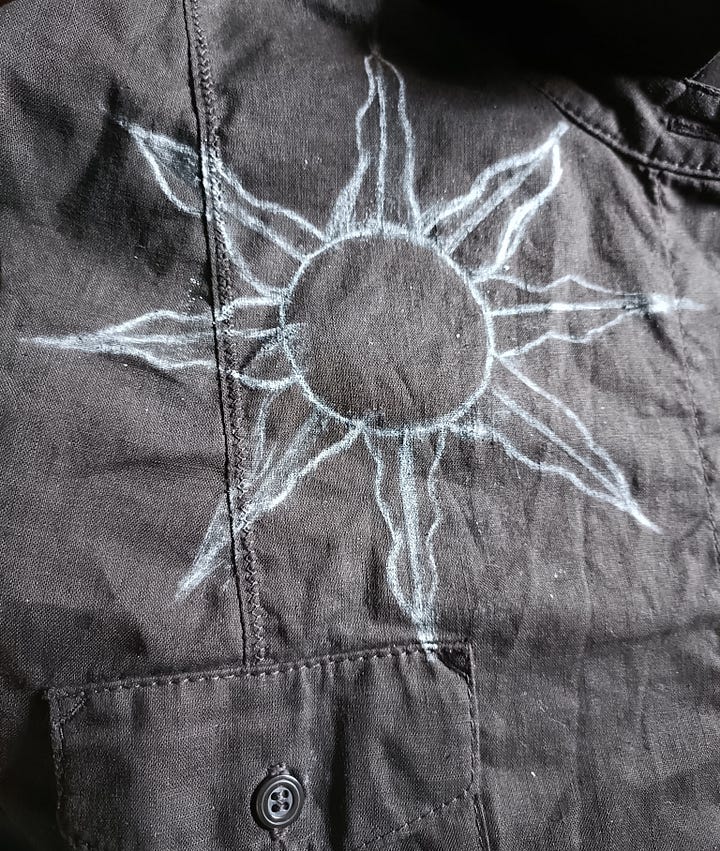
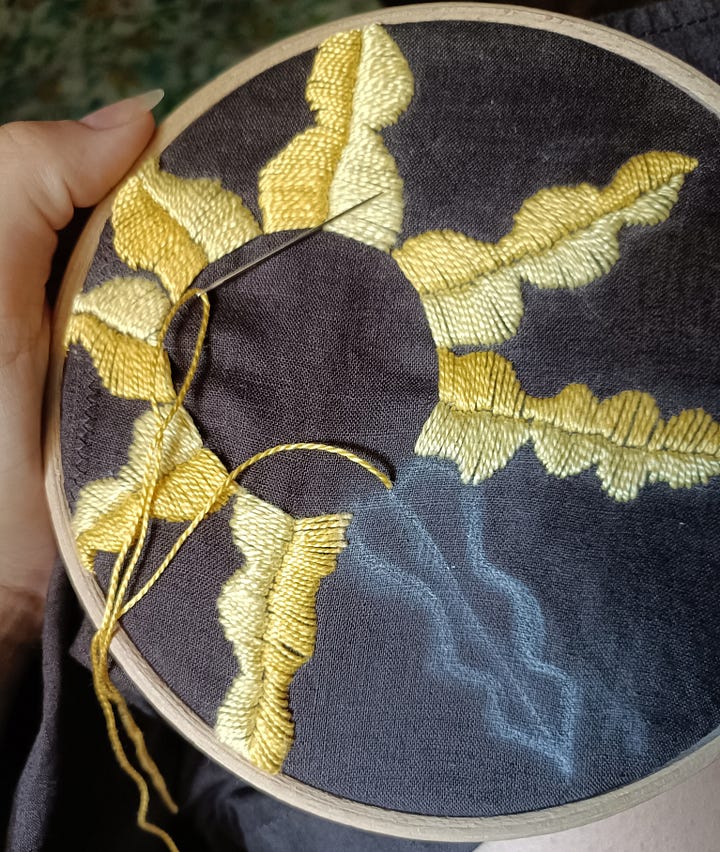

Phase one: Nigredo
The start of your journey begins with a descent into the deep, dark, hidden parts of your psyche. If you've been here before, chances are you already know what prima materia you'll be working with.
If it's your first time exploring the depths, I would recommend doing some deeper reflection on your own prima materia, or what exactly is calling for transformation within you before starting this exercise. This might look like revisiting childhood memories, trauma or shadow work.
Phase two: Albedo
Here, you give a face to your pain. You get to know its color, its texture, the shape of its eyes, what season it is, what fruit it tastes like. You're taking a feeling and conceptualizing it using symbolism, honing in on its true energetic nature. Albedo is all about gaining clarity and purifying your vision, so think of this stage as your rough draft or brainstorming session before leaping into creation.
Next, choose your tools of transformation. There are no rules in alchemical art. It doesn't have to look perfect. You could forage materials in a local park, using sticks and rocks to build a sculpture, or you could cut up old magazines that've been lying around the house to make a collage, it doesn't really matter. The real transformation happens inside. (Of course, if you do understandably want your piece to be more stylized, by all means, go for it.)
Phase three: Citrinitas
This is where the real fun starts. Here, you put your pen to the paper, your brush to the canvas, or in my case, the needle to the fabric. This is where the major transformation takes place, where the old bones you dug up are given new life through meaningful symbolism and quality time spent with your prima materia. Through artistic expression you are expanding your creativity and consciousness, exploring new ideas connected to your experiences.
This is the time to just go for it. If it's not something you can complete in one sitting, try to set aside at least one hour a day just to work on it. No noise. No interruptions. Just you and your prima materia. I think you'll find what happens next to be a pleasant surprise, but I'll let you be the judge of that.
Phase four: Rubedo
This phase marks the completion of using the four alchemical stages as a framework for inner exploration and creative expression. Upon completing your piece, you've successfully managed to bring something from the dark into the light. What began as an unsettling feeling has undergone a series of internal and external processes, finding an outlet of transformation through artistic expression. Hopefully by this point you've learned something new about your Self, your psyche, your relationship to expression and alchemy.
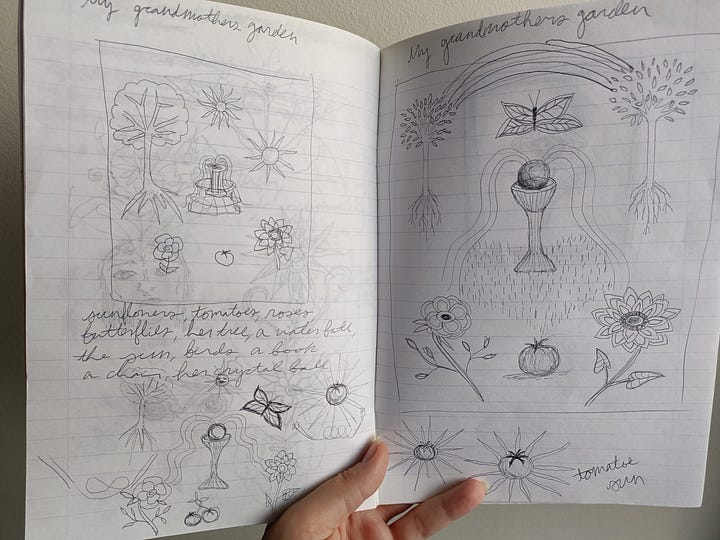
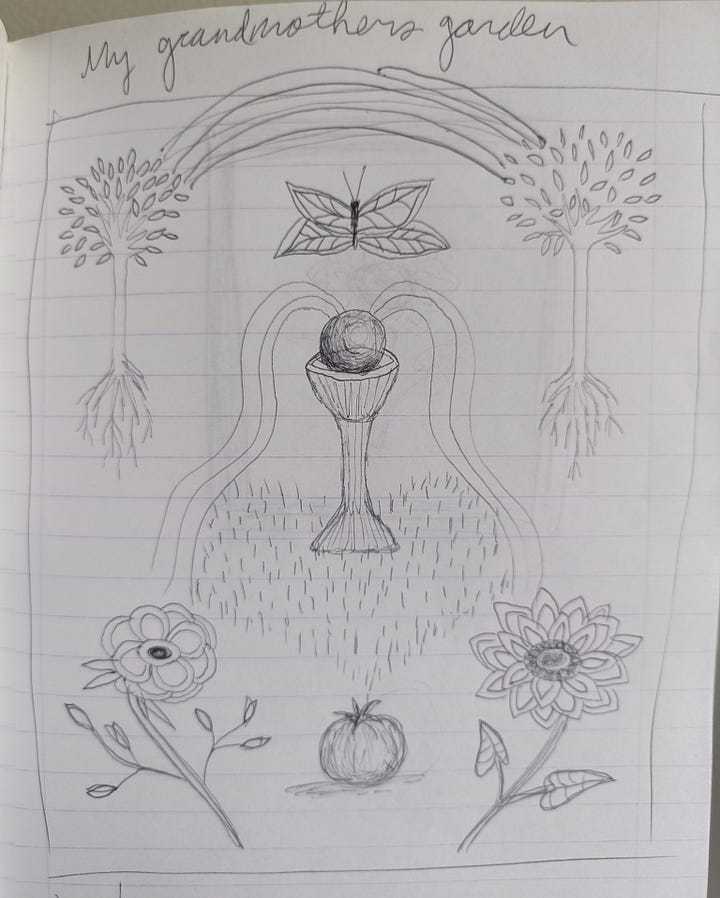
I'm currently in the Albedo stage of one of my own alchemy based art pieces. I chose to work with grief as it's something I'm still learning to live with and be transformed by. I want to make a small embroidered tapestry titled, “My Grandmother's Garden,” in honor of her memory.
To the external eye, it might not seem alchemical or transformative in any way, but just brainstorming ideas and drawing out symbols that reminded me of her and her garden has already helped me shift my thinking, focusing more on the good times we shared and her inner beauty as a person. I noticed that what was initially heavy and dark soon became light, as the feelings of grief slowly morphed into an appreciation of past experiences we shared together.
My grandmother always used to tell me that one day she would visit me in the form of a butterfly, so that was the first symbol I included. The rest of the symbols are things she loved and grew in her garden, including a sunflower, a rose, a crystal ball in a bird bath, her spirit tree, a rainbow and a tomato. More updates to come. ❤️
I’d love to hear your thoughts on:
Your experiences with Nigredo
Healing through transformative art
Using alchemy as a framework for creative expression
How you can support my work
I would love to keep exploring new creative ideas, and paid members help me do that. To support my work and help me keep writing, embroidering and writing about embroidering, consider signing up for a paid subscription. For the price of a coffee and a cookie, you’ll be directly supporting my ability to keep creating and sharing those creations with you.
If a paid subscription isn’t something you can commit to, consider making a one time contribution.
Likewise, if a loved one you know is currently in a Nigredo phase, consider sharing this knowledge in the hopes of helping them see the light in the dark.
Thank you, and may you be blessed always 🙏
Works Cited & Referenced
The SAP (Society of Analytical Psychology). (2023, November 30). Individuation and the self - the SAP. The Society of Analytical Psychology.
4135c-S, J. B. L. M. P. N. (2024, September 28). What does alchemy have to do with psychology? Taproot Therapy Collective.
What is Alchemical Art? - Counseling & Jungian Analysis. (2019, August 13). Counseling & Jungian Analysis.
The four stages of the Magnum opus. (2023, November 5). The Witch’s and Druids Den.


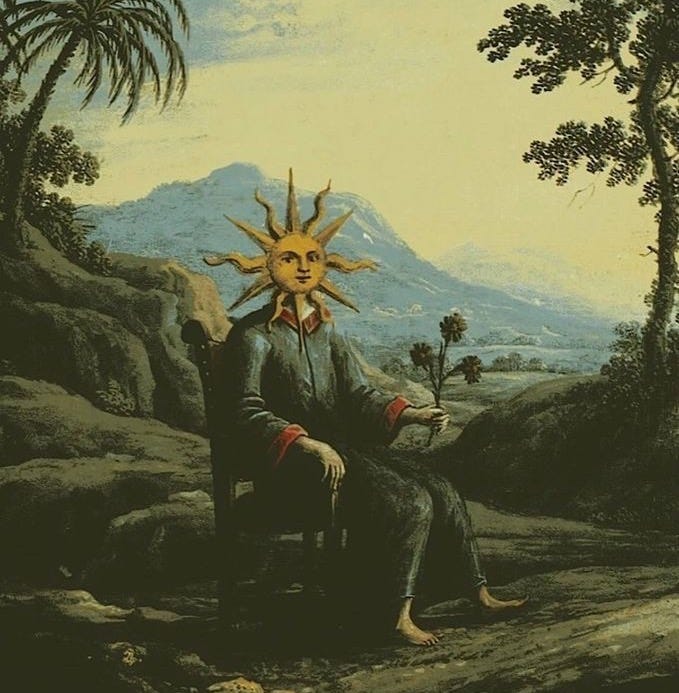
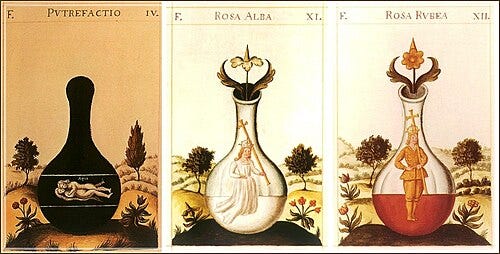
Thank you so much! Honestly felt a little nerve wracking to hit send on this one, so that means a lot.
Grief has definitely felt like an initiation for me, starting with the descent into darkness that you mentioned, but now it feels like there's no other choice but to be somehow reborn from the darkness. This reminds me that the alchemical stages also feel very similar to the cycles of life, death and rebirth that are sacred to so many.
The more I read about alchemy the more I see it's patterns in everything, and the more I'm convinced that everything is just a mirror of itself in some intricate, inconceivable way..
What you shared about your short stories is very interesting and reminds me of experiences I've had with certain dreams that I might not understand at the time but years later come to pass in my life and make me think, "ohhh so that's what that was about.." spooky indeed, yet somehow not entirely surprising. The unconscious mind is a curious thing..
Thank you for reading and sharing your thoughts ❤️
I really enjoyed reading this!
Alchemy as a model is one of my favorite things. It's funny I hadn't thought to apply it to other artistic projects outside of writing and graphic art (painting, etc). Definitely going to pay more attention with the pattern.
The tapestry design is lovely, and your story reminded me of many rituals of grieving involving going into its darkness to emerge as something new/create something. Also all the hero journeys through the realm of the dead. It really feels carved into our bones.
When I was in my late teens/early twenties I wrote A LOT. mostly short stories. I started noticing that during the more emotionally challenging periods my writing was "prescient". I thought it was spooky then but as I got older my theory became that my senses were picking up on signals that my brain wasn't ready to process consciously. So I "put them in order" in my stories, and then saw them unfold in real life. I guess I was going through all these phases without realizing it!
Thank you for writing this piece 🖤